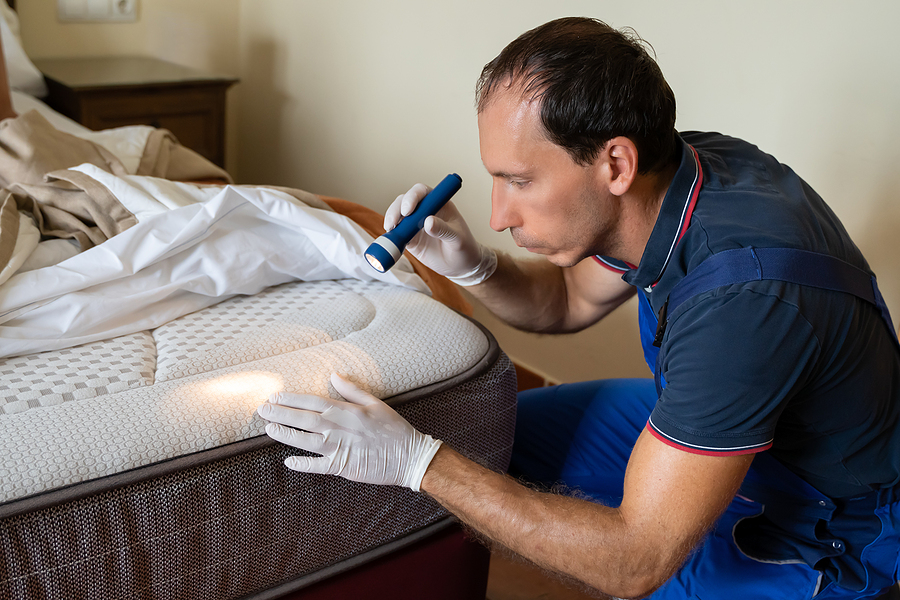Comprehending the Lifecycle of Pests for Targeted Control Techniques
Comprehending the lifecycle of parasites is a basic aspect of efficient insect administration strategies. Via a deeper understanding of exactly how parasites thrive and develop, customized control approaches can be made to deal with certain factors in their lifecycle, inevitably leading to more successful insect monitoring end results.
Significance of Understanding Bug Lifecycle
Understanding the lifecycle of bugs is vital for creating efficient and targeted control approaches in insect administration. By understanding the various phases a bug goes via from egg to adult, bug control professionals can identify susceptible factors in the lifecycle where intervention can be most effective.
In addition, recognizing the particular ecological problems essential for each stage of the insect's lifecycle can direct decisions on habitat modification or exemption methods to reduce and interrupt the lifecycle insect populations. This expertise makes it possible for pest monitoring experts to execute proactive measures instead than depending entirely on reactive therapies, bring about more long-lasting and lasting insect control solutions. Inevitably, a thorough understanding of bug lifecycles equips parasite control professionals to tailor their strategies successfully, reducing ecological effects and maximizing control outcomes.
Secret Stages in Bug Development
To efficiently execute targeted control methods in parasite administration, an important aspect lies in thoroughly recognizing and recognizing the crucial phases in parasite advancement. Bug advancement normally is composed of a number of key phases that are critical for their lifecycle and monitoring.

Vulnerabilities in Parasite Lifecycle
Throughout the different phases of an insect's lifecycle, distinctive vulnerabilities arise that can be strategically targeted for efficient control actions. One critical susceptability hinges on the egg stage, where bugs are often a lot more at risk to certain pesticides or organic control agents because of their soft outer covering, making them easier targets for intervention. Furthermore, the nymph or larval stage presents susceptabilities as parasites undergo fast development and advancement, requiring high energy intake that can be made use of by interrupting their food sources or presenting development preventions. Pupal stages, defined by stability and transformation, use a home window for targeted control via physical barriers or certain therapies that hinder effective emergence. Ultimately, adult bugs, while extra resilient due to their reproductive capability, can still be susceptible throughout breeding or egg-laying tasks, which can be interfered with via scent catches or sanitation strategies. Understanding these vulnerabilities in the insect lifecycle is necessary for establishing exact and effective control strategies that effectively manage parasite populations while reducing environmental influence.
Executing Targeted Control Actions

Executing targeted control procedures generally includes a multi-faceted strategy. This may include environment alteration to make the environment less welcoming to bugs, such as eliminating standing water for insect control or securing access points for rodents. Additionally, biological control approaches can be utilized, where natural killers or pathogens are introduced to keep bug populaces in check.
Integrated Bug Administration (IPM) methods that integrate different control steps in a coordinated and lasting fashion are usually the most reliable in attaining lasting bug administration goals. By implementing targeted control actions based on a detailed understanding of bug lifecycles, insect populations can be effectively regulated while lessening dangers to human health and the setting.
Improved Insect Management Practices

In addition, the unification of biological control agents, such as all-natural killers or microorganisms of insects, can aid reduce reliance on chemical pesticides and advertise an extra balanced environment. Applying physical barriers and traps can likewise be part of enhanced bug monitoring methods, supplying safe and targeted solutions for insect control. Furthermore, making use of scents and various other semiochemicals can disrupt pest mating patterns and communication, causing minimized bug populaces with time.
Conclusion
To conclude, recognizing the lifecycle of parasites is crucial for effective insect management techniques. By determining essential stages in insect advancement and vulnerabilities in their lifecycle, targeted control procedures can be carried out to decrease pest populaces. Boosted parasite monitoring techniques can aid lower the dependence on broad-spectrum pesticides and promote more lasting and eco-friendly insect control methods. This knowledge plays an essential duty in preserving healthy ecological communities and farming efficiency.
Recognizing the site web lifecycle of insects is important for creating efficient and targeted control strategies in bug management. By understanding the different stages a pest goes with from egg to adult, bug control professionals can determine vulnerable factors in the page lifecycle where treatment can be most successful. Eventually, a detailed understanding of bug lifecycles encourages insect control experts to customize their strategies effectively, taking full advantage of and decreasing environmental effects control end results.
By implementing targeted control procedures based on a thorough understanding of insect lifecycles, bug populaces can be efficiently managed while minimizing dangers to human wellness and the environment.
By determining crucial phases in bug development and vulnerabilities in their lifecycle, targeted control actions can be implemented to reduce insect populations.
Comments on “A1 Bed Bug Exterminator Houston: Trustworthy Treatment Providers”